The Olympus OM10 35mm SLR film camera, the first iteration of the Olympus OM 2-digit 35mm SLR series, is a highly regarded fully manual aperture-priority autoexposure camera among current film photography enthusiasts. Introduced in 1979, the OM10 was sold alongside the professional 1-digit OM SLR series as a lightweight and lower-cost consumer-grade option with high degree compatibility with the OM camera system setup.
Just like the professional series Olympus OM-2, the aperture-priority OM10 SLR camera is also fitted with the OTF (Off the Film) Direct Metering System, a highly regarded and unique light metering system that remains unmatched and hard to duplicate even to this day. The OM10 is compatible with all of the OM's system series of lenses, and most accessories, including the AutoWinder 1 and 2 as well.
While the OM10 is a robust, simple, and easy-to-use SLR camera for the beginner, it is also an advanced SLR camera for today's film photography enthusiasts. The camera is an utterly lightweight, autoexposure with exposure compensation for complicated lighting situations, mirror-up self-timer mode for vibration-free shots, a fully manual autoexposure camera with the manual adapter attached, and last but not least, the drawcard, accessibility to the range of pedigree 35mm Zuiko OM full-frame lenses and lens accessories.
Operationally, the Olympus OM10 is an aperture-priority Autoexposure mode camera with a center-weighted light metering system. The camera is fitted with an electronically controlled focal-plane shutter with a shutter speed range from 2 to 1/1000 second, with a switch dial setting for Bulb, and a Manual Adapter. The manual adapter, with a full range of 11 manual shutter speeds (1 to 1/1000 second) is available as an option, which will permit the OM10 to be used in shutter-priority or fully manual mode.
OLYMPUS OM-10 FIRST TRY OUT AND THOUGHTS
Matthew Simpson, a subscriber to the channel, emailed me and suggested I make a review of the Olympus OM10 SLR Camera and offered to send me HIS OWN camera to try! I couldn't turn this down. I wanted to keep the review simple and also go and shoot a roll of film, develop and make a few prints.
The camera is also fitted with an electronically controlled self-timer, +2EV exposure compensation in 1/2 stops, accepts film ISO speed range from 25 to 1600 (which can be extended to 3200 via the exposure compensation method), battery check function, and connectivity to the Olympus Autowinder 1 or 2. The OM10 is available both in black and chrome.
Basic Camera Features
A Quartz version of the OM10, the OM10 Quartz was released in 1980 with a fixed data back (equivalent to the Recordata Back 3 of the OM-System), to print the time or date on your pictures. The OM10 Quartz is only available in black. Film backs are not interchangeable.The front of the camera is equally sparse with only the Manual Adapter socket on the right, and on the left, the rewind button (another innovation from Olympus), and the Piezo electronic for the Self Timer/Battery Check light and beeper.
The Film Rewind Release, a unique feature of Olympus's 35mm SLR camera bodies, is located on the top left of the front plane, near where the location of the Shutter Release Button is.
On the top plate, from left to right, is the film rewind lever which is integrated with the power switch system of the Olympus OM10 - Battery Check, ON, OFF, and Self-timer. A hot shoe is integrated on top of the pentaprism.
A small slider switch, located on the opposite edge, partly hidden behind the film-advance lever, engages the Bulb and Manual setting mode.
The shutter release button, film advance crank, and film counter window make up the rest of the top plate.
The back of the OM10, with its non-interchangeable film back, is plain except for the huge viewfinder window located in the middle of the top plane's back.
On the bottom plate, the battery chamber cover, Autowinder coupling socket (exposed without a cover as opposed to the one on the 1-digit series), camera tripod socket, and a pair of electrical contact points.
The film box is a standard film load type with the film canister chamber, film guide rails, film frame opening, sprocket gear, and film take-up spool as normally seen on cameras of this era. Film forward to Frame 1 is the standard two-blank shots.
At the end of the roll, turn the Film Rewind Release switch to the left (in the direction of the arrow) before rewinding the film.
Viewfinder Readout
When metering is turned on, an active red LED is displayed alongside the indicated shutter speed selected by the camera at the lens aperture you set.
In manual adapter mode, the shutter speed display will reflect the speed set by the shutter speed dial on the adapter.
Aperture-Priority Auto Exposure
Aperture-Priority Auto exposure is the way of the OM10. Turn the camera on, and that's the shooting mode you get into. You’re in charge of focusing and choosing the aperture setting, and the camera figures out what the shutter speed should be. This is the mode most useful for newbies or for those just getting into (film) photography.Manual Exposure Control
You might notice that there are two types of Manual Adapters available (see image). The two are identical actually, one being the optional item that was sold separately, and the other as part of a kit package codenamed Olympus OM10 FC.
Lens Compatibility
Zuiko OM manual focus lenses are compatible across all Olympus OM bodies,Battery
The OM10 requires the use of a pair of readily available 1.5V LR or AR44 batteries for its autoexposure system.Camera Body Weight
The Olympus OM10 camera's body weight is 430 grams without batteries.Using The Camera
The compact OM10, fitted with, say, the Zuiko 50mm f/1.8, weighs in at only 606 grams. This should be light enough for you to carry around and not feel bothered by its bulk or weight. Although it may not have the same rugged build as those of the 1-digit series, the camera is a very capable performer, and should not in any way, hinder your interest in the analog.One feature that you might find interesting about the OM10 is when used in self-timer mode, the mirror flips up the mirror as soon as you press the shutter. This is equivalent to having a camera with a mirror lockup ability. Good for landscape and macro shots, where you would expect camera and mirror vibrations to be at their minimum, using the timer may also save you the bother of carrying a cable release.

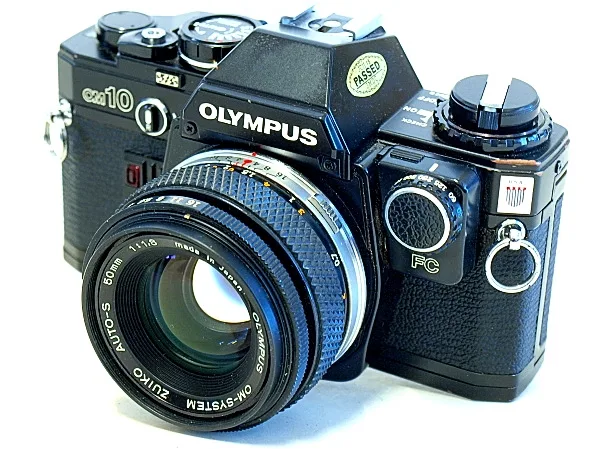


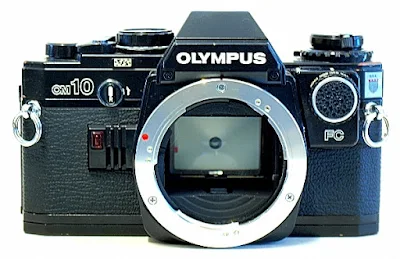

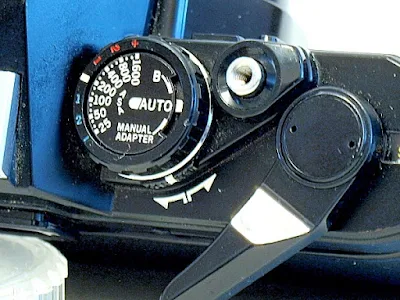
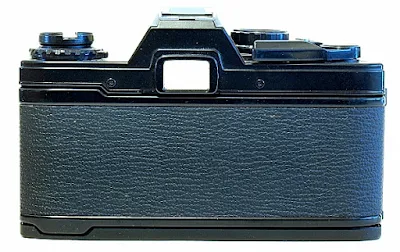
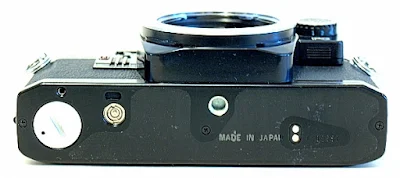


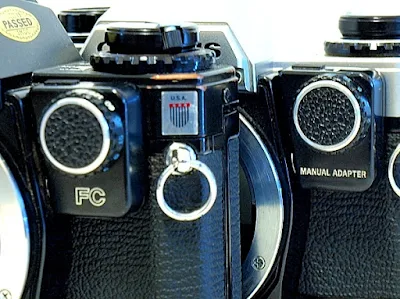












No comments:
Post a Comment